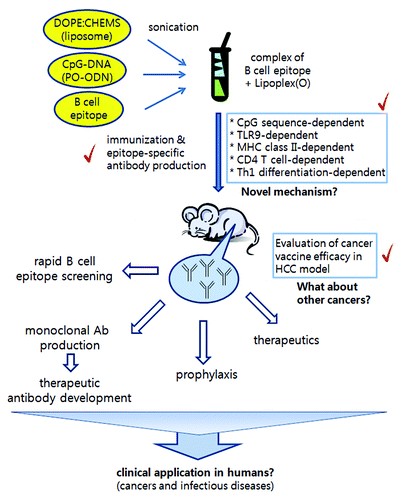Figures & data
Figure 1. Composition of novel peptide vaccines, some key mechanisms, evaluation in mice, and their possible application. Our peptide vaccine is a complex consisting of B cell epitope peptide, natural phosphodiester CpG-DNA, and DOPE:CHEMS liposome mixture. Immunization with the peptide vaccine in mice induces production of epitope-specific antibodies. Based on our experimental results, this process involves CpG-DNA, TLR9, MHC-II, CD4 T cells, and Th1 differentiation. Further investigation of the functional mechanism will give us a better understanding of the powerful efficacy of our novel peptide vaccine. We confirmed prophylactic and therapeutic effects with peptide vaccine targeting a cancer-specific antigen in the mouse hepatocellular cancer (HCC) model. We believe that this strategy can be widely used in rapid epitope screening, therapeutic antibody development, cancer vaccines, and defense against infectious diseases.
